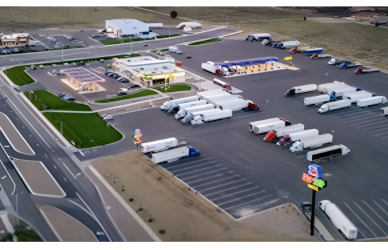10 Expert Tips for Maneuvering Semi-Trucks in Tight Spaces
Navigating a semi-truck through tight spaces demands skill, precision, and a thorough understanding of your vehicle’s dimensions. Whether you’re threading through city streets, maneuvering within crowded loading docks, or negotiating sharp turns, mastering this skill is vital for safe driving. In this guide, we’ll provide 10 expert tips to enhance your maneuvering abilities and prioritize safety in tight spaces.
1. Understand Your Vehicle’s Dimensions
Familiarize yourself with your truck’s length, width, and height, including any additional attachments such as mirrors or antennas. Knowing the exact dimensions of your vehicle allows you to assess available space and make informed decisions when navigating tight areas. This awareness is critical for avoiding collisions and ensuring safe passage through narrow lanes, low clearances, or confined spaces.
2. Plan Ahead
Before entering tight spaces, carefully plan your route. Identify potential obstacles such as low bridges, narrow streets, or weight restrictions that could impede your path. Utilize GPS devices specifically designed for trucks, which offer routing options that accommodate your vehicle’s size and restrictions. Pre-planning helps avoid last-minute maneuvers that can lead to accidents or damage.
3. Adjust Your Speed
Maintain an appropriate speed to enhance control and safety. Slow down before entering tight turns or confined areas, allowing for more precise movements. This careful approach gives you time to react to unexpected obstacles, such as pedestrians or sudden changes in the environment, and prevents overcorrection that can occur at higher speeds.
4. Use Your Mirrors Effectively
Properly adjust and regularly check your mirrors to maximize visibility. Keep an eye on approaching vehicles, pedestrians, and other potential hazards, especially when navigating through tight areas. Wide-angle and side mirrors are essential tools for spotting blind spots and ensuring your truck remains centered in your lane.
5. Practice Safe Backing Techniques
When backing up, always exit the cab to visually inspect the area behind your truck. Use a spotter if available, and establish clear communication signals to coordinate movements. Make small adjustments to your steering to maintain control and prevent accidents, especially in congested or complex spaces like loading docks or parking lots.
6. Utilize Offsets and Swing-Outs
When navigating tight corners, position your truck slightly towards the opposite side of the corner. Gradually swing out towards the corner to create a wider turning radius, preventing sharp cuts that can lead to clipping curbs or other obstacles. Mastering this technique improves maneuverability and helps keep your trailer aligned with your intended path.
7. Maintain Proper Lane Positioning
Stay centered within your lane to avoid scraping against obstacles or encroaching on neighboring lanes. Proper lane positioning minimizes collision risks and promotes smooth navigation through tight spaces. Use your mirrors and pay close attention to lane markers, ensuring you maintain a safe distance from other vehicles and barriers.
8. Be Mindful of Surroundings
Always be aware of your surroundings, including pedestrians, cyclists, and other vehicles. Stay alert for potential blind spots, and exercise caution when navigating through areas with heavy foot traffic or unexpected obstacles. A proactive approach to monitoring your environment significantly reduces the risk of accidents.
9. Know Your Turning Radius
Understand your semi-truck’s turning radius, especially when dealing with tight corners or intersections. This knowledge helps you anticipate how much space you need to make a turn safely without encroaching on adjacent lanes or obstacles. Practicing turns in controlled environments can help you become more familiar with your truck’s capabilities.
10. Regular Vehicle Maintenance
Adhere to regular maintenance schedules to ensure your truck is in optimal condition. Well-maintained brakes, steering systems, and tires are crucial for precise maneuvering in tight spaces. Regular checks also minimize the risk of unexpected mechanical issues that could compromise safety during critical moments.











